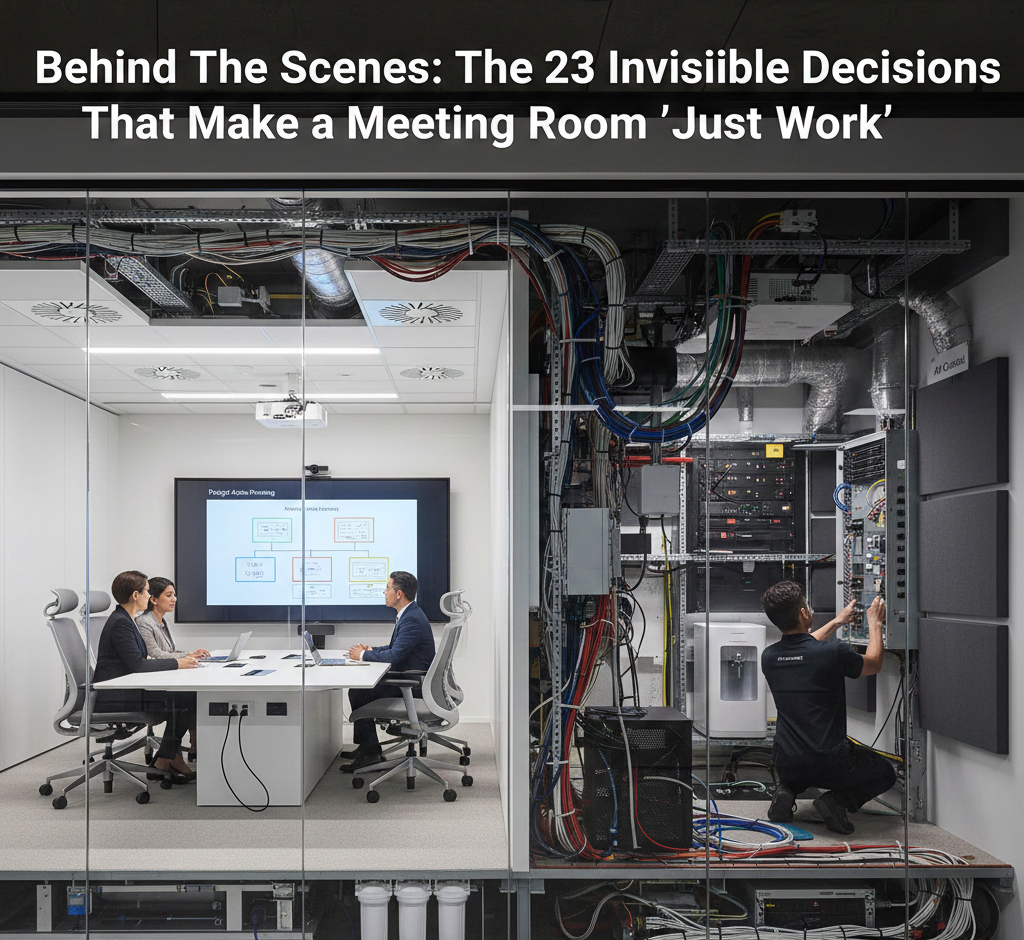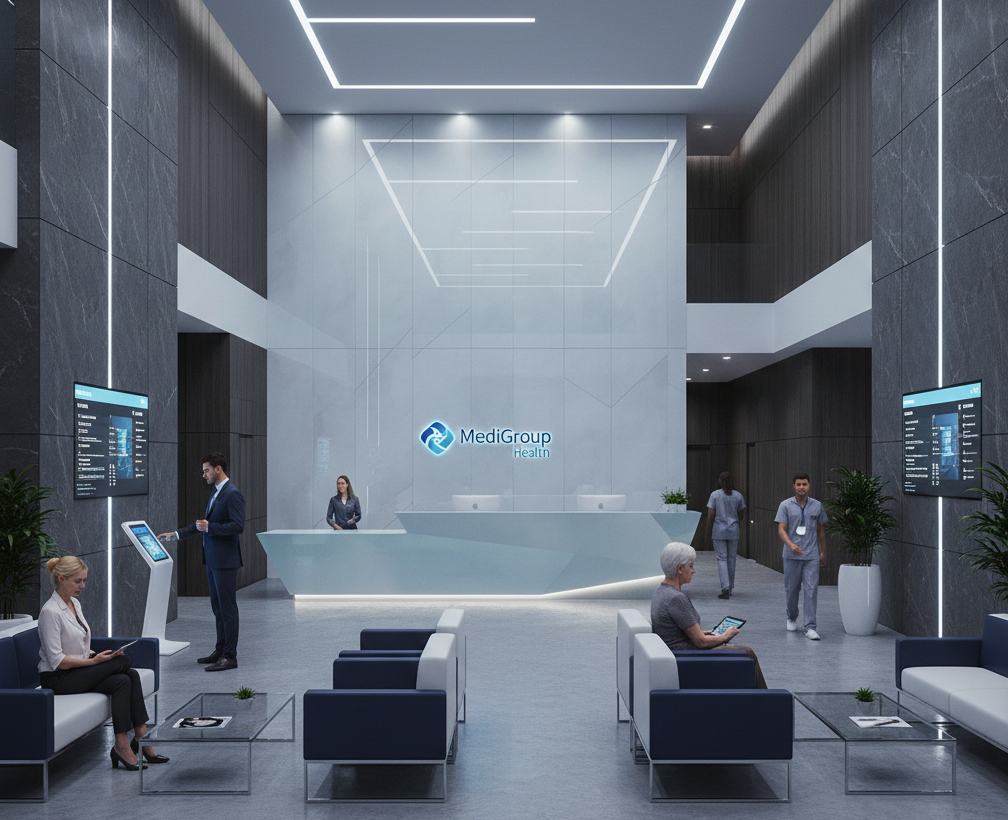You’ve spent a fortune on state-of-the-art Audio-Visual (AV) equipment to put your boardroom, control room, or campus in the league of the world’s best. But weeks into the project, this deployment is at a standstill—equipment is behind, cables look like a spaghetti monster, and the team is overwhelmed by technical problems. Sound familiar? AV launches are well known to derail because of logistical, technical, and planning pitfalls. In high-stakes contexts, such as corporate hubs, hospitals, or universities, these bottlenecks cause more than just inconvenience and frustration—they impede communication, collaboration, and productivity. But what if you could predict these barriers and remove them? For today’s blog, we break down 5 real-world AV deployment bottlenecks and how to solve them.
1. Vendor Delays: The Domino Effect
AV projects depend on a sophisticated network of international suppliers: displays from Korea, processors from the US, control systems from Europe, and specialized components from other particular producers. Your whole project may be paralyzed by one late shipment—say, a DSP unit held up in customs or a display panel with production shortages. This sets off a cascade of expensive delays rather than merely a nuisance. Installation teams wait, leased equipment accumulates costs, and project timelines are extended by months or weeks. An example might be that a hospital had to delay its telehealth launch because of a tardy microphone array, so staff needed to reschedule critical patient appointments or even revert to primitive systems. The outcome? Cost blowouts, delays, and disruption.
Resurgent eliminates this risk through:
- Vendor-Agnostic Sourcing: Utilizing connections with suppliers globally to rapidly shift if one sourcing channel stumbles.
- Buffer Stock: Maintaining a reserve inventory of high-demand items (e.g., DSPs, control interfaces) for urgent deployments.
- SLA-Backed Contracts: Holding vendors accountable with penalties for delays, ensuring timeline adherence.
Result: Projects stay on schedule, even when supply chains wobble.
2. Cable Clutter Chaos
What looks like a harmless jumble of wires is truly a high-risk liability. Bad cable management is a systemic failure point, not merely unsightly. Wires that are improperly laid are at risk from a number of threats: physical damage (crushed by furniture), too much electromagnetic interference (that can cause audio to buzz or video to flicker), and overheating. Technicians squander hours seeking the defective link in a rat’s nest of similar wires whenever failure happens—for instance, an HDMI cable malfunctioning in a company boardroom halfway through a presentation.
Resurgent tackles this with:
- Standardized Top-Down Design: Mapping cable pathways during planning—not post-install—using CAD tools.
- Intelligent Labeling: QR-coded cables linked to digital documentation for instant troubleshooting.
- Consolidated Infrastructure: Deploying hybrid fiber/copper backbones to reduce cable volume.
Result: Cleaner racks, faster repairs, and scalable systems.
3. Integration Headaches
The modern AV system is composed of a blend of conventional equipment, IP-based devices, cloud software, all designed to function efficiently. Frequently, too, they decline to work together. A Crestron control panel might not “see” a Shure microphone array. A Zoom Rooms package may interrupt an existing Cisco VoIP system. Conversely, a 10-year-old projector may lack support for HDCP 2.2, therefore blocking 4K material. These system integration errors appear as confusing end-user difficulties: touch panels freezing, video walls not changing inputs, or audio cutting out during videoconferences. Diagnosis of these problems calls for deep technical forensics—examining firmware mismatches, driver conflicts, or protocol incompatibilities (e.g., H.323 vs. SIP). The results? Project handover postponement, consumer distrust in the technology, and expensive revision.
Resurgent’s approach includes:
- Open-API Frameworks: Using standards like Dante, SIP, and IP-based control to ensure cross-vendor harmony.
- Virtualized Pre-Deployment Testing: Simulating integrations in a lab environment to catch conflicts early.
- Certified Ecosystem Kits: Pre-validated hardware/software bundles (e.g., Teams Rooms, Q-SYS) for plug-and-play reliability.
Result: Flawless interoperability from day one.
4. Scope Creep: The Silent Budget Killer
Scope creep starts innocently: “While you’re here, could you set up a display in the lobby?” or “The CEO also wants video walls in the canteen.” These “little” additions turn into budget and schedule catastrophes in the absence of tight controls. Unexpected complexity sometimes results from new requests: structural changes, network improvements, or acoustic treatments. One conference room enhancement turns into a building-wide AV renovation and may add 20% to 50% to the time. As costs rise, resources are re-routed, original deliverables deprioritized, and client-contractor trust erodes.
Resurgent prevents creep via:
- Modular Milestones: Breaking projects into phases (e.g., “Core AV first, digital signage next”) with fixed budgets per stage.
- Change Order Protocols: Requiring formal sign-offs for additions, with impact analyses on cost/timeline.
- Collaborative Roadmaps: Using tools like Trello for real-time client updates on progress and trade-offs.
Result: Predictable outcomes, no surprise invoices.
5. Testing & Commissioning Bottlenecks
Often hurried to satisfy deadlines, testing results in terrible post-launch failures. Teams might usually test elements in isolation (e.g., “Does the projector turn on?”) but ignore actual system behavior. The outcome? A CEO’s all-hands address may have microphones that feedback, evidence on display in court may freeze during video segments, or touch panels may lock up when 3 types of signals are routed at the same time. These failures are not just embarrassing. They damage credibility, trigger emergency service calls that cost a pretty penny, and disrupt business operations that are critical to the organization’s success. And in places like live broadcast studios or emergency operation centers, such flaws might not just be annoying, but could have fatal consequences.
Resurgent ensures reliability with:
- User-Centric Scripts: Testing real-world scenarios (e.g., “Simulate a webinar with 100 participants”).
- Automated Monitoring: Deploying sensors to track AV health (temperature, signal integrity) pre- and post-launch.
- Staged Handoffs: Training in-house staff during testing to build confidence and document workflows.
Result: Systems that perform under pressure, every time.
Conclusion
AV deployments shouldn’t feel like navigating a minefield. Bottlenecks like vendor delays, cable chaos, and integration nightmares are predictable—and preventable. At Resurgent AV Solutions, we specialize in streamlining AV rollouts for organizations of all sizes, from corporate campuses and healthcare networks to universities and smart homes. Our end-to-end deployment strategy combines modern architecture, rigorous governance, and future-ready design to eliminate classic pitfalls.
Why Resurgent?
- Sector Expertise: Tailored solutions for control rooms, auditoriums, meeting spaces, and beyond.
- Scalable Frameworks: Adaptable systems that grow with your needs.
- Seamless Connectivity: Enhancing collaboration through intuitive, integrated technology.
Ready to transform your spaces? Contact Resurgent today for a deployment assessment. Let’s turn your AV vision into a frictionless reality.
FAQs
1. What are common problems faced during AV deployment?
Common problems include vendor delays, messy cable management, integration issues between different devices, project scope expanding unexpectedly, and insufficient testing.
2. How does Resurgent AV Solutions prevent these issues?
Resurgent uses strategies like vendor-agnostic sourcing and buffer stock for delays, standardized cable design, pre-deployment testing for integration, and strict change order protocols to manage scope.
3. How can I get help with my AV deployment from Resurgent?
You can contact Resurgent today for a deployment assessment to turn your AV vision into a frictionless reality.



